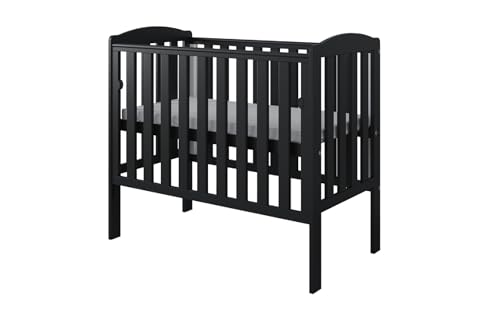Viculii Cots might not be the first term that springs to mind when one thinks of ancient agricultural practices, but this term encapsulates a fascinating aspect of pastoral community life that has persisted through the centuries. Often associated with traditional livestock rearing, Viculii Cots signifies more than just a method of farming; it represents a lifestyle, a culture, and a commitment to sustainable living. This blog post delves into the history, methodology, and the significance of Viculii Cots, providing readers with an informative overview of this unique agricultural practice.
What are Viculii Cots?
Viculii Cots, often referred to as cot systems, are primarily a method used in livestock farming, particularly in areas where pastures are not uniformly fertile. These cots, or enclosures, serve as small grazing areas where livestock can be contained while also being encouraged to forage and graze more sustainably. The primary purpose is to optimize land usage, enhance animal health, and minimize overgrazing, leading to nearly self-sustaining ecosystems.
Key Characteristics of Viculii Cots
| Characteristics |
Description |
| Enclosure |
Small, fenced areas to manage grazing patterns. |
| Rotation |
Frequent movement of livestock to different cots. |
| Foraging |
Utilizes native flora to provide a varied diet for animals. |
| Sustainability |
Designed to balance pasture recovery with livestock needs. |
| Community Focus |
Traditionally rooted in community cooperation and sharing. |
Historical Background
The concept of Viculii Cots traces back to ancient pastoral communities, especially in regions where climate and soil quality varied dramatically. Early agronomists understood the importance of allowing pastures to recover from grazing pressure. Over time, this evolved into the structured systems we observe today. In some cultural contexts, these methods were not merely economic but were deeply interwoven with social and spiritual practices—a way for communities to connect with the land and each other.
Benefits of Viculii Cots
-
Enhanced Land Use: By rotating livestock between various cots, farmers can better utilize the land and maintain soil health.
-
Improved Animal Health: Access to diverse flora allows for a varied diet, which can improve livestock health and productivity.
-
Environmental Sustainability: Reduces the risk of overgrazing, promoting biodiversity and soil fertility.
-
Community and Cultural Links: Traditional practices strengthen community ties and foster sustainable local economies.
-
Adaptability: The flexibility of cot systems allows them to be modified to suit different agricultural and environmental conditions.
Implementing Viculii Cots
Step-by-Step Guide
-
Site Selection: Choose land with varied vegetation and soil types to maximize the nutritional benefits for livestock.
-
Design the Cots: Determine the size and number of cots based on livestock type and densities.
-
Fencing: Use robust fencing to prevent livestock from straying and to protect them from predators.
-
Rotational Grazing Schedule: Create a grazing plan that includes a rotation schedule to ensure optimal grazing and recovery times for each cot.
-
Monitoring Soil and Plant Health: Regularly assess the condition of both soil and vegetation to adapt the grazing schedule as needed.
-
Community Involvement: Engage with local farming communities for knowledge sharing and resource pooling.
Tools and Resources
| Tools |
Purpose |
| Fencing Materials |
To construct secure cots. |
| Soil Test Kits |
For monitoring soil health and nutrient levels. |
| Grazing Management Software |
To plan and track grazing schedules. |
| Local Workshops |
Community and training resources for sharing best practices. |
Frequently Asked Questions (FAQ)
1. What types of animals can be managed using Viculii Cots?
Viculii Cots can accommodate a variety of livestock including sheep, goats, and cattle. The system can be adapted based on the specific dietary needs of the animals.
2. Is this method applicable in urban farming?
Yes! While traditionally used in rural settings, Viculii Cots can effectively be adapted for urban environments to manage small-scale livestock like chickens or rabbits.
3. How do I know if Viculii Cots are right for my farm?
Evaluate your land type, climate, and livestock needs. Consider consulting with agricultural experts or joining farming co-ops that focus on sustainable practices.
4. Can Viculii Cots contribute to organic farming?
Absolutely! By minimizing input costs and fostering a biodiverse environment, Viculii Cots can significantly contribute to organic farming practices.
5. What are some common challenges faced with Viculii Cots?
Challenges may include fencing maintenance, potential soil degradation if not managed properly, and the need for constant monitoring of both flora and fauna within the cots.
Viculii Cots offer an insightful glimpse into sustainable agricultural practices that have evolved over centuries. These systems not only benefit the environment but also strengthen community bonds and promote a harmonious coexistence between agriculture and nature. For farmers seeking to enhance their practices, adopting Viculii Cots might not just be beneficial, but a rewarding journey into a more sustainable way of living. As agricultural practices continue to evolve in the face of climate change, the principles of Viculii Cots may well provide crucial lessons for the future of farming.






